No TV out there can hold a candle to the 100-plus inches of sheer viewing pleasure offered by a projector. And with massive advances in DLP, LCD, and LED projector technologies, you no longer have to worry about poor image quality or the massive amounts of heat generated by lamps that die out too soon.
If anything, with the right projector, you can now get an exceptionally immersive viewing experience. So, gaming, movie nights, and even reruns become infinitely more enjoyable. But, all that is possible only if you pick a projector that is built to meet your requirements.
In fact, both the projection technology and light source you choose will have a bearing on how well your brand-new projector fares. So, continue reading to know what DLP, LCD, and LED projector technologies are all about and if a DLP laser projector will work for you.
What is a DLP projector?

The older of the two popular projection technologies, DLP (Digital Light Processing) involves the use of a DMD chip that includes microscopic mirrors. Each of these mirrors acts as one or more pixels and can tilt between on and off positions. A beam of light from a light source is condensed and reflected through a rapidly spinning color wheel.
The light then gets reflected through a shaping lens and onto the DMD chip. From here, the micro mirrors reflect it further through the projection lens and onto the screen. DLP chipsets boast exceptionally fast reaction times.
Plus, the DMD chip is able to project bright whites without blue/green bias. So, DLP projectors are perfect for gaming, and home theater setups as well as for schools and offices where they can be used for video and PPT presentations. The light source used in a DLP projector could be a high-intensity lamp, LED, or laser.
Types of DLP projectors
1. Single-chip DLP: As the name suggests, a single DMD chip is used in this type of DLP projector. The use of a single chip lowers the cost of these units. That along with their fast response time and high image quality have contributed to their immense popularity.
2. 3-chip DLP: Although these units cost more, the use of 3 DMD chips, one each for red, blue, and green colors, results in exceptional image quality and color vibrancy.
3. ALPD + DLP: While these projectors can have 1 or 3 DMD chips, they use fluorescent laser technology as the source of light. Because Advanced Laser Phosphor Display (ALPD) produces higher output lumens for every input watt, the combination of ALPD and DLP offers brighter images.
4. Short throw and ultra-short throw: This refers to the projection distance required by the unit. Short and ultra-short throw projectors need a mere 4 to 1.5 feet to project a screen of 100 inches plus. A regular projector would need more than twice that distance to offer the same screen size.
5. Portable/Pico DLP: Because DMD chips are lighter, the unit itself has a small footprint, which allows for portable applications.
6. True 4K DLP: Think of this as an upgrade on traditional DLP technology, Texas Instruments' proprietary XPR, True 4k technology allows projection units to achieve a whopping 8.3 million pixels. That's 4 times the pixels of traditional DLP including HD (1080) DLP and two times the pixels of 3LCD. You can get more information on how 4k DLP projectors compare with Full HD 1080 DLP projectors here.
7. Interactive DLP:This refers to projectors capable of accepting interactive inputs through the use of touchscreen technology.
Benefits and Drawbacks of DLP projectors
Many believe that LCD is a more advanced technology as compared to DLP. But, that is only till you factor in the recent developments in the DLP domain and the various combinations that this technology is being used with.
Together, these factors have managed to tackle most issues associated with the traditional single-chip DLP units of the past. Take a look at how the present-day DLP projectors fare when pitched against other types of products.
Benefits of DLP projectors
1. Exceptional image quality: The use of tiny mirrors in the DMD chip yields superior image sharpness and impressive image detailing.
2. Greater image saturation: Because DLP chips have a higher number of pixels, you get greater color saturation, which results in more striking images.
3. Rapid response time: Since the tilting mirrors oscillate rapidly between on and off positions, DLP chipsets offer a very fast response time. This makes DLP projectors an ideal match for gaming and videos.
4. Excellent tonal contrast: Unlike LCDs, DLP projectors are capable of projecting true blacks and bright whites. This leads to better tonal contrasts and exceptionally detailed images. Find out about the other differences between LCD and DLP projectors here.
5. More durable: The DLP chipset is held in a sealed casing, so it is resilient to damage and degradation attributed to dust accumulation, vibration, and heat.
6. Lightweight and compact units:A DMD chip is less than 1 square inch in size. So, when traditional lamps are replaced with LED or laser in DLP projectors, the weight of the unit is reduced to a mere 2.5 lbs or less. There is also a similar reduction in the size of the unit.
7. Available in fixed and portable versions:DLP projectors are available in tabletop versions as well as portable forms that can simply be taken along for outdoor use.
8. Low maintenance:Units that do not have high-intensity lamps as their light source have an average lifespan of 20,000 hours or more. Also, because the chip uses microscopic mirrors, these units are not prone to pixel burnouts and gradual deterioration in image quality.
Drawbacks of DLP projectors
1. Not as bright: The performance of traditional DLP projectors, those that use lamps as their light source, is marred by images that are not as bright as they should be. Lower brightness also means that ambient light has a greater effect on image quality. In contrast, LCD technology offers brighter images.
However, the combination of ALPD with DLP technology is a game changer. Because you get an output of over 2000 lumens, the images are just as bright as those offered by LCD projectors.
2. Lower color gamut and accuracy: With a traditional DLP projector the brightness issue is a double-edged sword. While it leads to greater color saturation, it negatively impacts color accuracy; case in point, the color red is displayed as a shade of brown. With LCD, you get better color accuracy at least for darker colors/shades.
Once again, ALPD comes to the rescue because it offers a wider color gamut, thus leading to greater color accuracy. Moreover, the enhanced brightness also helps to improve color accuracy.
3. Susceptible to the rainbow effect:This is not so much of a problem in 3-chip DLP projectors, in which the color wheels spin at 4 times the speed of the color wheel in single-chip units. Typically, you won't encounter the notorious color bands when using high-end DLP projectors.
4. Limited zoom and lens shift: DLP projectors are designed for quick installation and plug-and-play. So, they have limited capability, if any at all, for lens shifts and zooming. So, these cannot be used for a presentation where the image size and position need to be changed. For instance, DLP projectors are not the right fit for large auditoriums where image size will need to be increased.
READ MORE: DLP Projector vs. LCD Projector: What Are The Differences
Best DLP laser projectors

WEMAX pioneered the combination of ALPD and DLP technologies. Together, these two complementary technologies neutralize the drawbacks of each other while enhancing the benefits.
For instance, the use of ALPD offers brightness that is at par with LCD projectors. Also, you get the same energy efficiency. Along the same lines, DLP technology tackles drawbacks like pixelation while retaining benefits like greater color saturation and tonal contrast.
Moreover, WEMAX is the first manufacturer to make this hybrid technology, which provides cinema-grade performance, available to retail users. Today, the company offers products for both home and outdoor use.
The WEMAX Nova is a tabletop, ultra-short throw projector that offers 4K image quality with 2100 ANSI lumens performance. Simply put, you will bring the big screen experience of a movie theater into your living room with this projector.
READ MORE: WEMAX Nova In-Depth Review—The Best Laser TV 4K Cinema for Movie and Games
But, why restrict your movie nights to just your home theater setup? With the WEMAX Go Advanced, you can take all your media with you. Be it a presentation at work or checking out the photographs of that breathtaking sunset you captured while hiking, the WEMAX Go Advanced can do it all and more.
READ MORE: Hands-on: One Month With The WEMAX Go Advanced
What is an LCD projector?
Instead of a DMD chip, LCD projectors use liquid crystal display panels to project the image through the projection lens and onto the screen. Either a lamp, LED, or laser is used to emit a beam of white light that is passed through prisms to separate it into the light of different wavelengths (colors).
These beams are then projected on LCD panels which have pixels that open or close as needed to create the exact colors required. The colored light is then projected onto a converging lens/prism and reflected through the projection lens onto the screen.
Because LCD projectors offer bright images and vivid colors along with impressive clarity, they can be used in home theater setups. But their blue/green bias on white makes the image quality less than desirable for presentations.
Types of LCD projectors
1. Auditorium/presentation LCD: These are specifically designed for use in auditoriums, schools, and conference rooms. They offer high color accuracy and exceptionally bright picture quality.
2. Lamp LCD: As the name suggests, these use high-intensity lamps as their light source.
3. Laser LCD: While the technology used in these units is LCD, laser is used instead of a lamp as the light source.
4. Short-throw projectors: Like comparable DLP units, these too can project screen sizes of 100 inches or more when kept a mere 4 feet from the projection surface.
5. Interactie projectors:These allow for touchscreen input.
Benefits and Drawbacks of LCD projectors
Initially, LCD technology was considered a step above DLP since it did away with several drawbacks of the old-world DLP units. Also, these products were primed to cater to the non-commercial market. So, they continue to be popular, but the technology has its fair share of pros and cons.
Benefits of LCD projectors
1. Brighter images:Single-chip, lamp-driven DLP units certainly cannot hold their own against LCD projectors when it comes to image quality. Because the lumens output of LCD units often starts at 1000-1200 lumens, the images are brighter, which makes the colors appear more distinct.
2. Greater energy efficiency and lamp life:if you were to compare lamp-driven units, an LCD projector with a lamp would undoubtedly beat a DLP lamp projector in terms of both lamp life and power efficiency. This is attributed to the ability of LCD technology to offer a higher lumens output and better light beam usage.
But, the lamp life would still be in the range of 1000-5000 hours. So, eventually, the light source would burn out requiring a replacement. Along the same lines, as long as a high-intensity lamp is used in the projector the heat generated by an LCD projector would be no different from the heat output of a DLP projector.
3. Greater color accuracy:LCD technology offers better color accuracy, at least when it comes to brighter shades. However, in dealing with lighter hues, the additional brightness is more bane than boon as it washes out the pastels.
4. No rainbow effect:Unlike DLP technology, LCD panels aren't prone to color separation. So, you will never experience the rainbow effect when using an LCD projector.
5. Lower price:One of the primary reasons for the popularity of LCD units is their lower price range. You can expect to get a decent LCD projector for as little as $500 while a high-quality unit would cost you a bit more with a range between $700- $800.
Drawbacks of LCD projectors
1. Motion blurring with fast images: While LCD projectors offer impressive picture quality for static images, things deteriorate rapidly when the images move across the screen at a fast pace. In fact, motion-related image blurring is one of the most jarring issues of LCD projectors.
2. Washed-out colors:An LCD projector operated at normal/factory settings will present lighter colors with a noticeable washed-out effect. You can pin this on the extra brightness that you get from LCD technology. While this works wonders for dark colors, the very same attribute decreases tonal contrast as well as the accuracy of pastel colors.
3. Lack of true black and white: LCD panels cannot display true black or true white. While white is often displayed with a blue/green bias, black is displayed as a shade of grey/blue.
4. Lower contrast ratio:Because LCD projectors lack the ability to display true black and pure white, they have a significantly lower contrast ratio as compared to DLP projectors. In fact, decreasing the brightness and increasing the contrast ratio to the maximum is often the only way to deal with the blue/green bias on white. Also, the lower contrast ratio has a direct bearing on the attractiveness of the images.
5. Lower color saturation:The brightness also has a strong impact on color saturation. Despite the greater color accuracy, the brightness reduces the color saturation, making some shades seem less vibrant and the overall images less striking.
6. Pixelation:Also known as the screen door effect, this is another common issue with LCD projectors.
7. Pixel burnout and degradation:Over time, the pixels in the LCD panels tend to burn out. This can create dark spots and color inaccuracies.
8. Higher maintenance requirements: Because the LCD panels are not held inside a sealed casing, they are prone to damage due to dust accumulation, heat, and vibration. So, while they are not expensive to operate, LCD projectors do need regular maintenance and may need more frequent component changes than DLP projectors.
9. Heavier and larger:LCD units also tend to be larger and heavier than DLP projectors because of the prisms and the LCD panels used in the assembly. So, you won't find a lot of portable projectors that use LCD technology.
What is an LED projector?

The popular misconception is that LED is a type of projection technology. It isn't! LED or light emitting diode simply refers to the light source used inside the projector. In terms of projection technology, LED could be coupled with a DMD lens just as well as it could be combined with an LCD panel.
So, it would not be appropriate to compare LED projectors with DLP or LCD projectors. Rather, a more appropriate comparison would be between LED, laser, and lamp used as the source of light in either of the two projection technologies.
In terms of technology-related pros and cons, LED does not impact factors like motion blur, ability to display true black, artifacting (rainbow effect), screen door effect (pixelation), or color accuracy because all of these are connected with the projection technology and not the light source.
Having said that, the use of LED does make a difference to the weight and the size of the unit along and operational heat output.
Types of LED projectors
Portable projectors: Their small footprint makes it possible to simply pick these LED projectors and carry them along wherever you go. The unit could have a DMD chip or LCD panels but the use of an LED bulb means that the projector will be lighter and sturdier.
Pocket or pico projectors: These are ideal for handling presentations on the go and for when you want to take your media outdoors along with you.
Short throw projector: As explained above, these units are capable of a 100-inch screen output even when placed 4 feet away from the projection surface.
Benefits and Drawbacks of LED projectors
LED projectors can bring some distinctive benefits to the table when compared to lamp-based projectors. However, when pitched against laser units, LED projectors win in some areas and lose in others. An in-depth comparison can be found here.
Overall, LED projectors are well-suited for a wide range of applications. You could just as easily and effectively use one in your workplace or in school as you could at home.
In the same vein, an LED projector will leave you impressed with its performance when gaming, watching TV, or enjoying a movie.
Benefits of LED projectors
1. Longer lifespan: As compared to high-intensity lamps that offer a paltry lifespan of 1000-5000 hours, you can expect to get no less than 20,000 hours from an LED. This is comparable to the lifespan of a laser light source.
2. Greater energy efficiency: In terms of electricity consumption, LED projectors are the hands-down winner as both lamps and lasers consume more energy than LEDs. So, if you were to rank them, LED would be the most energy efficient while high-intensity lamps would be the least energy efficient and laser would rank somewhere in between.
3. Lower cost: LED projectors have a lower price tag than laser projectors. Also, if a component were to need replacement, getting a new laser light source would cost you more than a new LED.
4. Impressive image brightness:Although not at par with laser projectors, LED units are conspicuously brighter than lamp projectors. Moreover, new-age LED units are offering ANSI lumen output of 2000 and more lumens. But, undeniably laser has the lead on this front because they are already scaling the 30,000-lumen mark. It goes without saying that you would never really need that kind of blinding brightness for home or office applications.
Drawbacks of LED projectors
1. Color accuracy: if you compare an LED projector with a lamp projector, the LED unit would come out on top for both color accuracy and saturation. But it will fall behind when pitched against a laser projector.
The principle is quite simple. While laser produces a more focused and concentrated beam of light, LEDs offer diffused light which has to be condensed before it is fed to the LCD panel or a DMD chip.
The concentrated light beam of a laser means that you get greater accuracy when it comes to the wavelength of the light and hence the color of the light beam that finally makes it out of the projection lens.
2. Color saturation: The diffused light emitted by an LED bulb also leads to lower color saturation. So, while LED projectors are bright, the colors are never as vibrant and certainly not as bright as those offered by laser projectors.
READ MORE: LED vs. Laser Projector—Which Is Better?
Top-of-the-line LED projector

If you are looking for a high-quality LED projector that won't burn a hole in your pocket but will leave you impressed with its performance, the WEMAX Vogue Pro will fit the bill perfectly. Built by combining the efficiency of LED and the superlative performance of DLP technology, this projector offers full HD performance with 1600 ANSI brightness.
So, you can enjoy your TV shows and movies without worrying too much about the ambient light. Plus, it projects a screen size range of 60 to 200 inches across a distance of 4.9 to 9.8 feet. So, it is perfect for your home theater setup.
READ MORE: How To Install and Configure The WEMAX Vogue Pro
Side-By-Side Comparison: DLP, LCD, or LED Projectors
|
Criteria |
DLP Projector |
LCD Projector |
LED Projector |
|
Full form |
Digital Light Processing |
Liquid Crystal Display |
Light Emitting Diode |
|
Type of Technology |
Imaging technology that uses a digital micromirror device which is an array of aluminum micromirrors. |
Imaging technology that uses dichroic mirrors/prisms along with a light source and LCD panels for image projection. |
Can be used with DLP or LCD technologies. |
|
Image Quality |
Regardless of the light source does not suffer from color decay or image. |
Lamp + LCD projectors offer superior image quality and sharpness as compared to lamp + DLP projectors. LED + LCD projectors are at par with laser + DLP projectors. |
Better image quality for both LCD and DLP projectors as compared to units that use high-intensity lamps as their light source. |
|
Color accuracy |
Lamp-based devices display red and orange as hues of burgundy/brown. Similar inaccuracies are also experienced in the display of yellow and magenta which are often projected as lime green and purple. |
Better color accuracy than DLP. |
Greater color accuracy than traditional lamps but lower than laser. |
|
Color contrast |
Superior color contrast with deep and true black and bright and pure white. |
Lower tonal contrast ratio as compared to DLP projectors. |
Has no impact on color contrast. |
|
Color saturation |
Greater color saturation as compared to LCD projectors. |
Lower color saturation |
Offers better color saturation than traditional lamps but lesser than laser-based units. |
|
Image brightness |
DLP lamp units project darker images than lamp + LCD units. However, the use of a laser with DLP technology increases the brightness significantly by taking the ANSI output to 2000 lumens and higher. |
Significantly brighter images as compared to traditional DLP projectors. Comparable image brightness is possible when DLP technology is combined with ALPD. |
Brighter than lamps but not as bright as laser. |
|
Where to use |
Home theater, conference rooms, schools, for gaming. |
Home theater setup and large auditoriums. |
Home, office, schools, auditoriums. |
|
Maintenance |
Sealed DLP chipset requires no maintenance and component damage are rare. |
Pixel burnout problems and image quality deteriorate over time. Also, regular filter changes are required. |
Depends on projection technology. |
|
Light source performance |
Laser DLP units emit more heat than LED but less heat than a high-intensity lamp. |
Traditional lamps produce a comparable amount of heat no matter what projection technology is used. But the combination of LED with LCD leads to the lowest heat output. |
Generates the least amount of heat and hence has the greatest energy efficiency. |
|
Lamp life |
Gets 2,000-3,000 hours if a lamp is used as the light source, 20,000 to 25,000 hours in case of laser. |
Higher energy and light efficiency increase lamp lifespan to a range of 3,000-4,500 hours. When LED or laser is used, you can get 20,000 to 25,000 hours of lamp life. |
20,000 hours |
|
Size |
Small footprint and low weight. Units typically weigh 2.5 lbs or less and are no more than 10-12 square inches in size. |
Larger and heavier units. |
Based on projection technology, but certainly smaller than units that use traditional lamps. |
|
Portability |
Lightweight and portable devices that can be carried anywhere. |
The use of prisms leads to bulkier projectors that are not portable. |
More portable than lamp-powered units. |
|
Ease of use |
Most high-end units are plug-and-play devices with a variety of input channels. |
High-end devices are plug-and-play with multiple input channels. |
LED does not require a cooling off or warming up period. |
|
Ease of installation |
Ultra short throw units don't need special installation as they can be placed on any table or a pedestal of about 2 feet from the projection screen. |
Typically available in regular throw, which requires make and model-specific installation. |
Based on projection technology. |
|
Prices |
Cost more than LCD projectors. Price is typically in the range of $1,800 to $2,800 but the device can cost more based on specific features. |
Devices usually cost half of comparable DLP units. Prices are in the range of $1,000 to $1,500. |
Cost more than traditional lamps but less than laser. Prices are in the range of $700 to $1,000. |
Wrapping It Up: Is a DLP laser projector the best choice?
Undoubtedly, there have been significant advances in DLP, LCD, LED projector technologies. And while there have been distinctive improvements in performance all across the board, DLP laser projectors have an undeniable lead.
Pin this on the fact that the combination of laser and DLP is an optimal one, so they enhance the benefits of each other while toning down the drawbacks.
Despite all of that, if cost is a factor, an LED projector would be a better bet. On the other hand, if the application calls for lens shifting and zooming, it would be best to go for an LCD projector.
However, if you intend to use the projector for gaming and don't mind spending a bit more for an out-of-the-world visual experience, a DLP projector will make it hard for you to put your gaming controller down.
When ease of installation is the main criterion, a portable, ultra-short-throw DLP projector would be the right choice. But if you are upgrading from a lamp-based projector and don't want to change the existing setup, an LED or LCD projector will get the job done.
To cut a long story short, there is no such thing as the best projector type of technology. In the end, it all boils down to your specific requirements.
And you will need expert opinion and relevant advice to make a choice like WEMAX!
WEMAX is the go-to provider of high-quality ALPD, LED, and laser projectors, turning homes into home theaters that elevate your viewing experience in the comfort of your own home.
You can learn about putting together a home theater system, installing your new projector, and/or setting up a gaming room with a high-end projector by signing up for the WEMAX newsletter.
Every edition is packed with how-tos and step-by-step instructions plus expert advice on how best to use projectors at home, at work, and in school. Plus, you get information on seasonal offers and festive deals. So, sign up right away for projector-related tips, information, and above all massive discounts.
Be the first to know the latest updates, tips, how-tos, exclusive deals, and discounts from WEMAX. Sign up for our newsletter today!


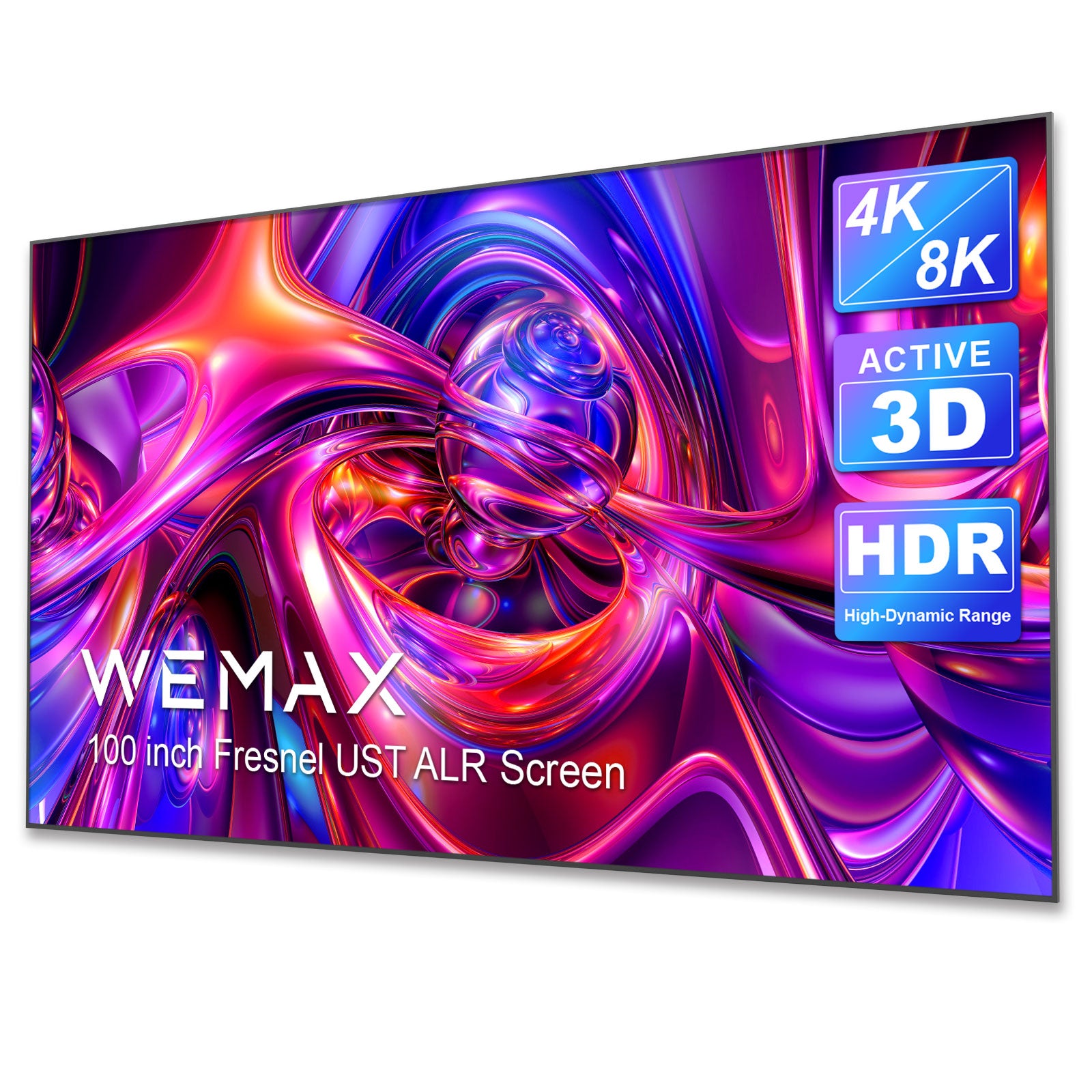

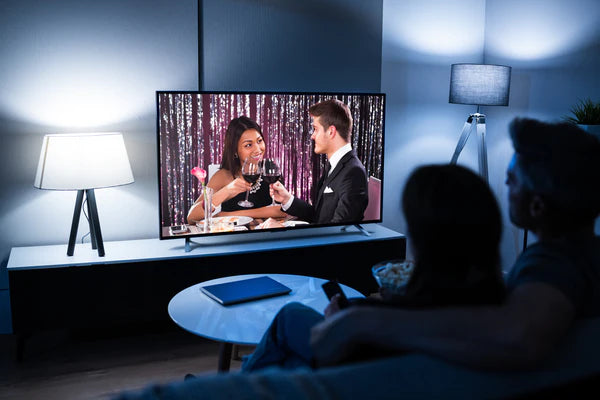
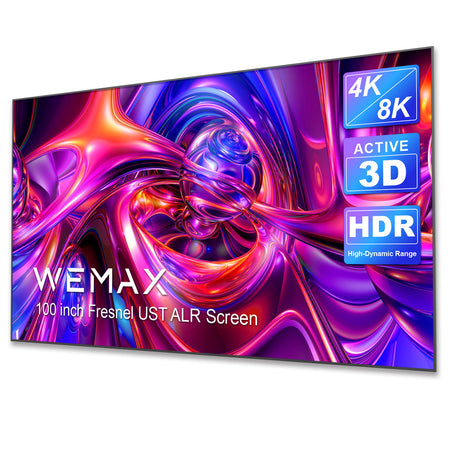
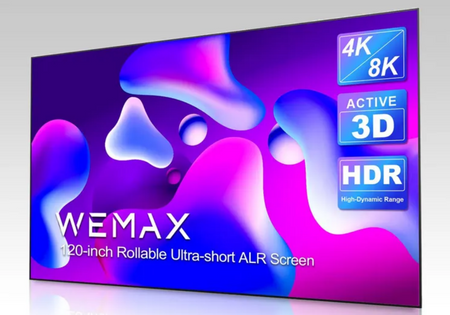
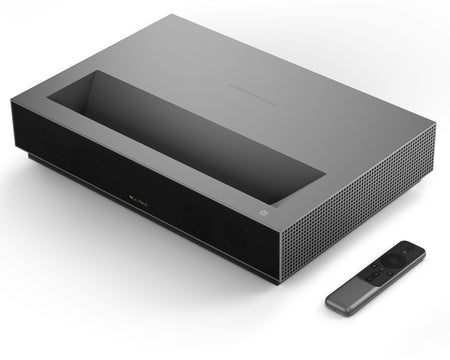
Comments (0)
Back to Tips and Tricks